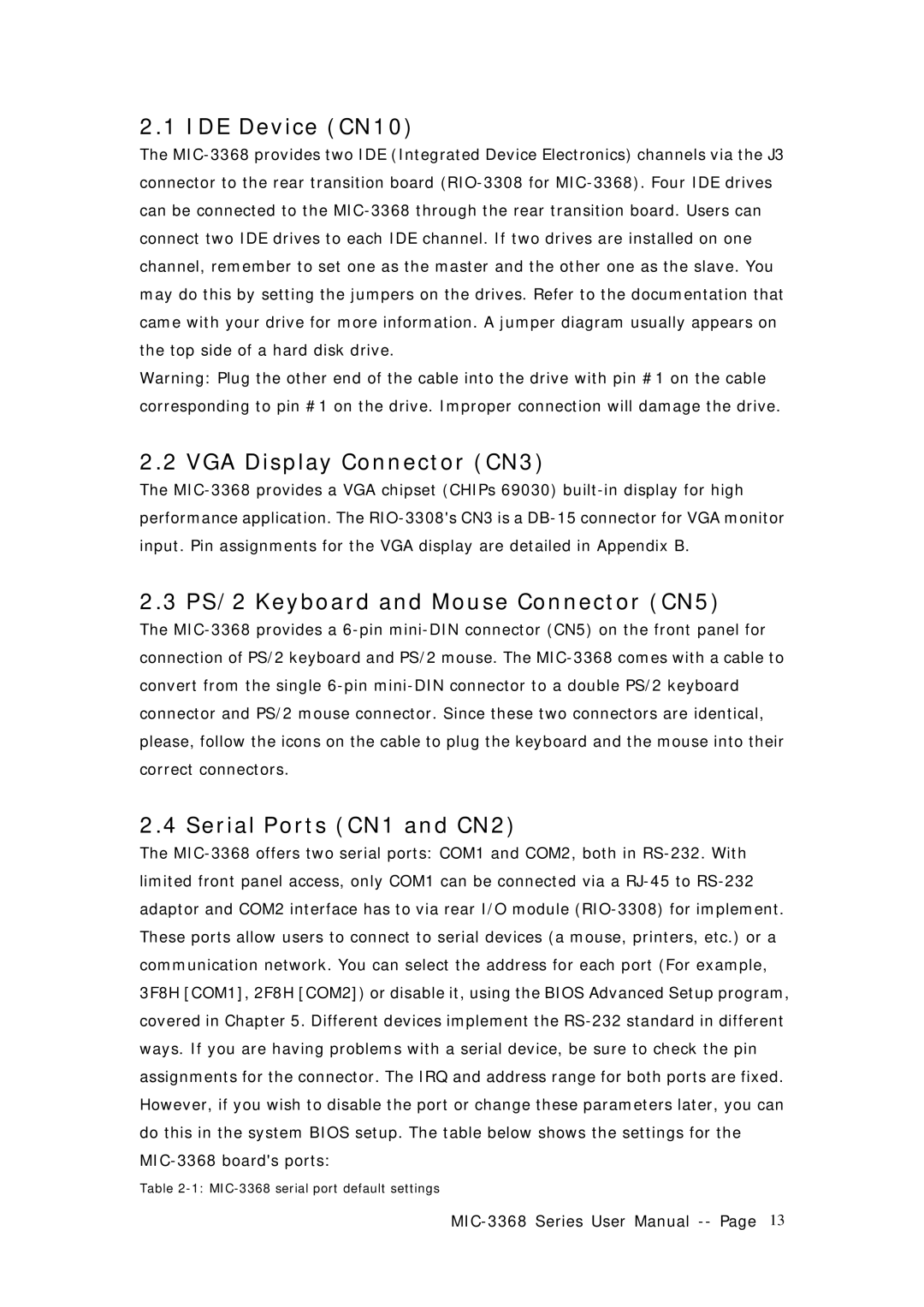2.1 IDE Device (CN10)
The MIC-3368 provides two IDE (Integrated Device Electronics) channels via the J3 connector to the rear transition board (RIO-3308 for MIC-3368). Four IDE drives can be connected to the MIC-3368 through the rear transition board. Users can connect two IDE drives to each IDE channel. If two drives are installed on one channel, remember to set one as the master and the other one as the slave. You may do this by setting the jumpers on the drives. Refer to the documentation that came with your drive for more information. A jumper diagram usually appears on the top side of a hard disk drive.
Warning: Plug the other end of the cable into the drive with pin #1 on the cable corresponding to pin #1 on the drive. Improper connection will damage the drive.
2.2 VGA Display Connector (CN3)
The MIC-3368 provides a VGA chipset (CHIPs 69030) built-in display for high performance application. The RIO-3308's CN3 is a DB-15 connector for VGA monitor input. Pin assignments for the VGA display are detailed in Appendix B.
2.3 PS/2 Keyboard and Mouse Connector (CN5)
The MIC-3368 provides a 6-pin mini-DIN connector (CN5) on the front panel for connection of PS/2 keyboard and PS/2 mouse. The MIC-3368 comes with a cable to convert from the single 6-pin mini-DIN connector to a double PS/2 keyboard connector and PS/2 mouse connector. Since these two connectors are identical, please, follow the icons on the cable to plug the keyboard and the mouse into their correct connectors.
2.4 Serial Ports (CN1 and CN2)
The MIC-3368 offers two serial ports: COM1 and COM2, both in RS-232. With limited front panel access, only COM1 can be connected via a RJ-45 to RS-232 adaptor and COM2 interface has to via rear I/O module (RIO-3308) for implement. These ports allow users to connect to serial devices (a mouse, printers, etc.) or a communication network. You can select the address for each port (For example, 3F8H [COM1], 2F8H [COM2]) or disable it, using the BIOS Advanced Setup program, covered in Chapter 5. Different devices implement the RS-232 standard in different ways. If you are having problems with a serial device, be sure to check the pin assignments for the connector. The IRQ and address range for both ports are fixed. However, if you wish to disable the port or change these parameters later, you can do this in the system BIOS setup. The table below shows the settings for the MIC-3368 board's ports:
Table 2-1: MIC-3368 serial port default settings
MIC-3368 Series User Manual -- Page 13
